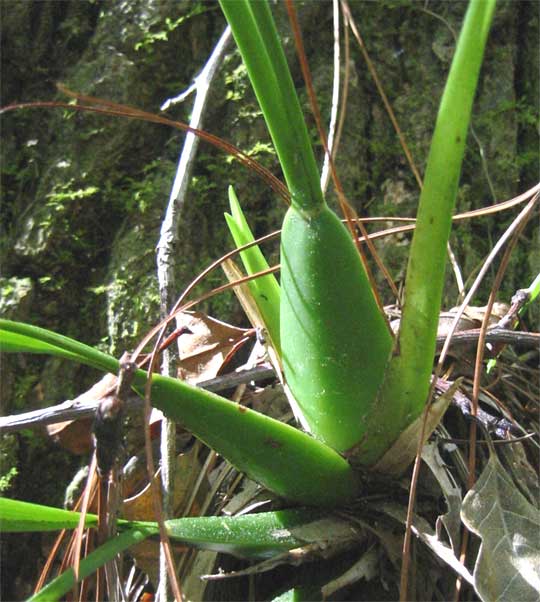Excerpts from Jim Conrad's
Naturalist Newsletter
from the January 28, 2008 issued from Yerba Buena Clinic just outside Pueblo Nuevo Solistahuacan, Chiapas, MÉXICO For the last couple of weeks a sweetly fragrant, pretty little orchid has been blossoming on a tree trunk near my dwelling. That's it below. My friend with the Orquídeas de México book seems to have disappeared, so I can only guess that it's an Oncidium, of which Breedlove's "Flora of Chiapas" lists 24 species. Don't forget that the Orchid Family embraces the greatest number of species of any plant family. My old Bailey's Manual of Cultivated Plants estimates that about 300 Oncidium species exist, all in the New World. If you want to try to identify my neighboring tree species, a flower close-up resides below. When identifying orchids you're profoundly grateful for any feature that can be easily observed, instead of having to master the Orchid Family's unique and hard-to-decipher anatomy. One of those easy-to-see features is that of "pseudobulbs." Some genera have them and some don't. Oncidium does, and of course that's a pseudobulb at the page's top. Pseudobulbs, or "false bulbs," are thickened, solid and above-ground stem sections on certain orchids. They're stem material, not root. Sometimes you see clusters of pseudobulbs on a tree trunk, the leaves and flowers having dried up and fallen off. Pseudobulbs' internal tissue is typically like the green, dense, succulent, mucilaginous flesh of an Aloe blade. The pseudobulb's main purpose seems to be to store water and nutrients, though many orchid species survive perfectly well without them.
about 1740 meters in elevation, ± LAT. 17° 11' 27"N, LONG. -92° 53' 35"W
ORCHID PSEUDOBULBS


